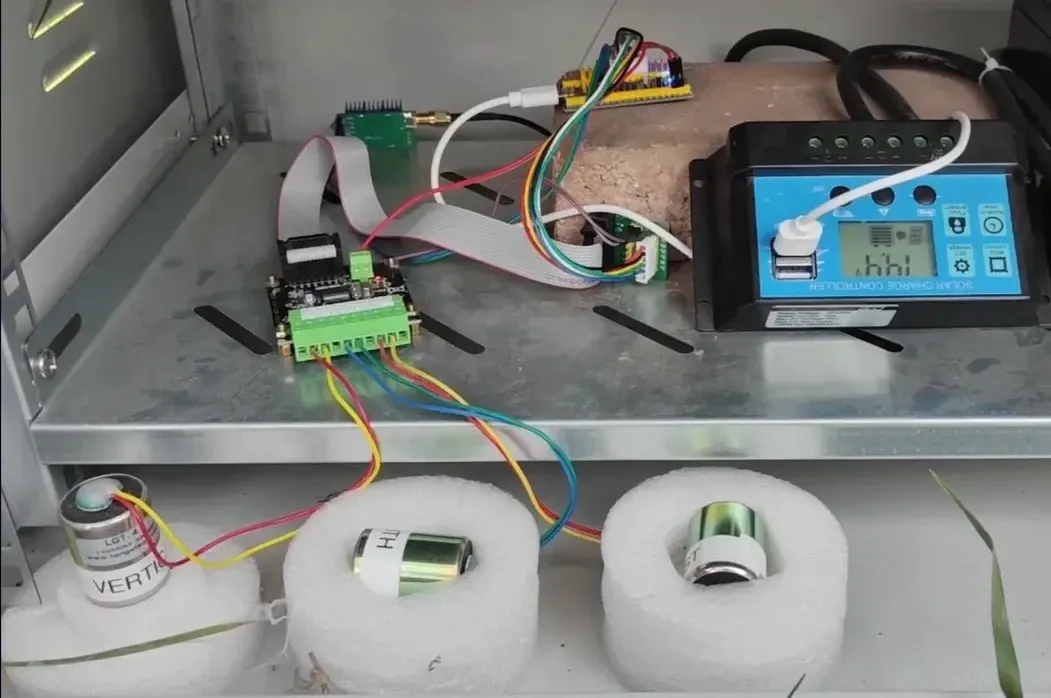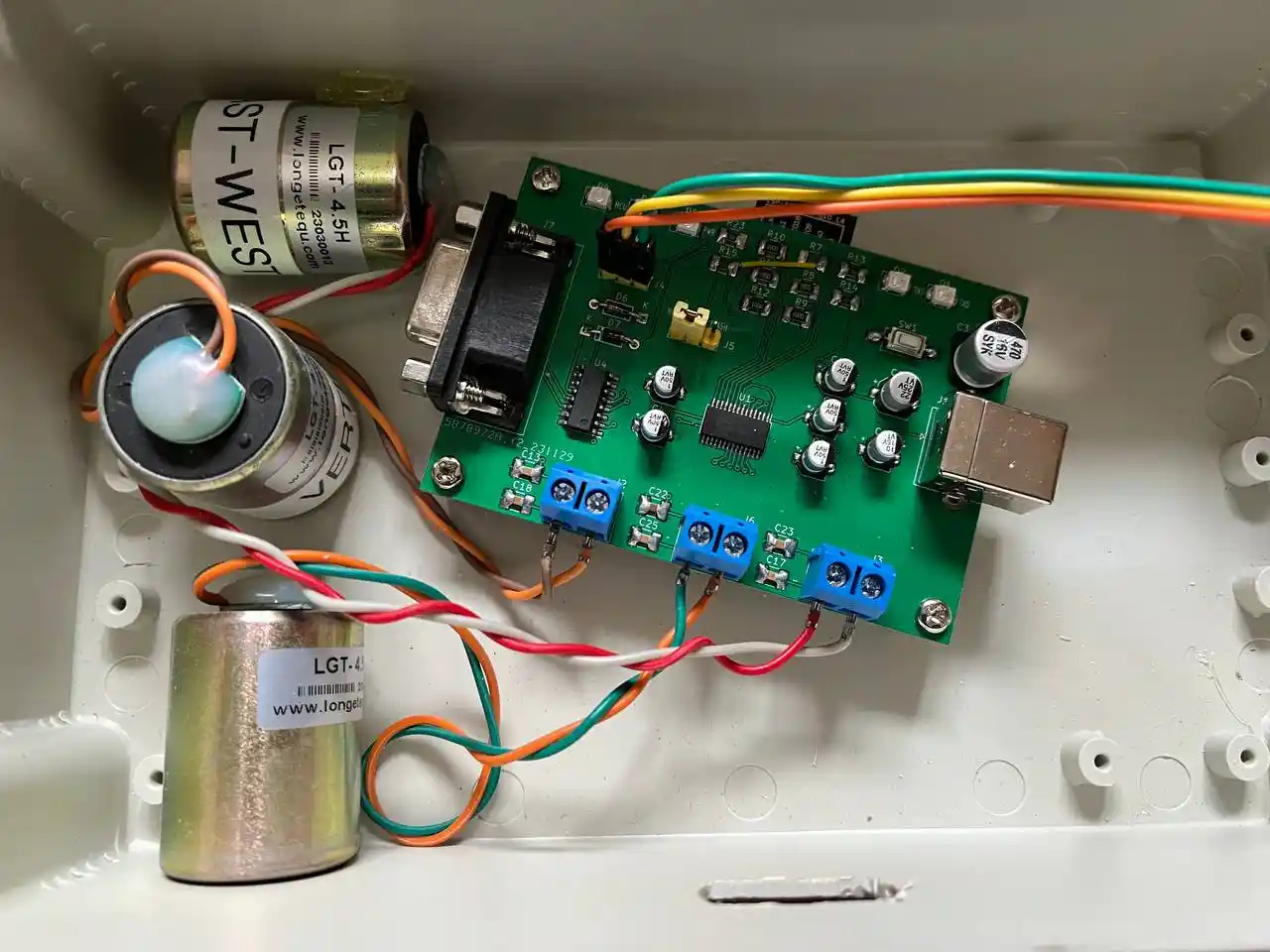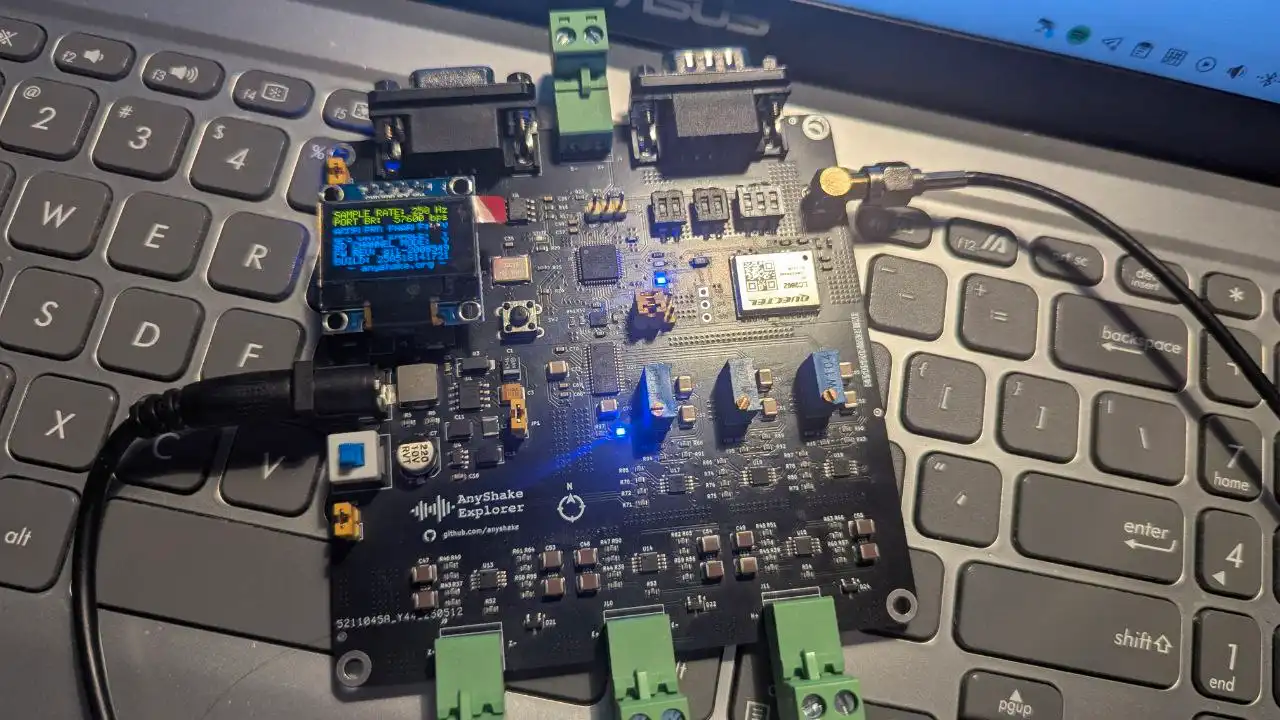Product Series Overview
The Story
The AnyShake Explorer was first conceived in 2023, when a undergraduate student, unable to afford the expensive RS3D, decided to build a solution from scratch. The original prototype was a modest, amateur effort based on the ADS1256.

Later, the ADS1256 was upgraded to an ADS1262, which was then integrated with an MCU onto a PCB board.

After several iterations, the design evolved from a basic ADC-only version to one that integrated a 3-axis accelerometer and a front-end amplifier. It drew inspiration from the amplifier design of olewolf/geophone, but due to the simplicity of that approach, the system still suffered from excessive noise.

Through extensive research of academic papers, countless experiments, and persistent debugging, the final version of the product emerged — now known as the AnyShake Explorer.

At the beginning, the AnyShake Project encouraged users to DIY hardware, but as the project grew, the project maintainer received numerous requests from users hoping to directly purchase a finished product. In response, the original developer established SensePlex Limited at the end of 2024, aiming to commercialize the AnyShake product while preserving its open-source nature and achieving sustainable development.
Architecture
AnyShake Explorer is designed using KiCAD, with an STM32 microcontroller at its core. Development tools include STM32CubeMX and PlatformIO, and the system runs FreeRTOS. The device features a 32-bit ADC, a built-in low-noise 3-axis accelerometer (16-bit), and supports connecting up to three 4.5 Hz geophones (for a total of six axes) to monitor seismic activity simultaneously. It also includes onboard temperature sensor, allowing users to monitor ambient conditions alongside seismic data. To match the performance of proprietary competitors, a pole-zero compensation circuit was implemented for geophone signal conditioning, effectively extending the instrument period to 2 seconds (0.5 Hz) and enabling improved detection of distant seismic events.
Unlike some solutions, AnyShake Explorer does not include an integrated single-board computer (SBC). This design choice results in ultra-low power consumption and avoids electromagnetic interference commonly introduced by onboard components like Wi-Fi—a frequent complaint among Raspberry Shake users. Instead, data is transmitted via RS-232 or RS-485 to an external computer, such as a laptop, x86_64 server, NUC, or Raspberry Pi. AnyShake Explorer is fully compatible with Windows, Linux, and macOS systems.
Product Models
Currently, the AnyShake Explorer comes in three models:
- E-C111G
- E-C121G
- E-D001
E-C111G is the officially released version. E-C121G was used during the closed testing phase and remains compatible with the E-C111G. The main difference lies in the accelerometer model: the E-C111G uses the LSM6DSR, while the E-C121G uses the ICM-42688-P.
E-D001 is the early version of the AnyShake Explorer hardware, found on the v1 branch. It is based on the ESP8266 platform, some early adopters of the AnyShake Project built their own units and continue to use them.